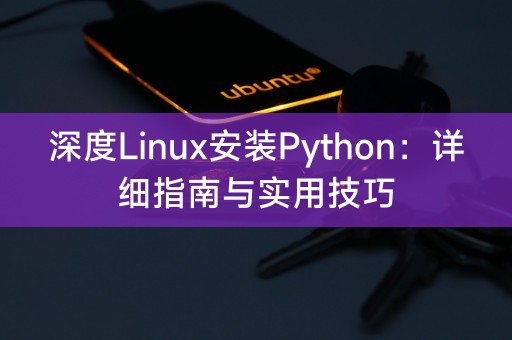
php editor Apple brings you an article about detailed guides and practical tips for in-depth Linux installation of Python. As we know, Python is a powerful programming language and installing Python in Linux system may face some challenges. This article will provide you with comprehensive guidance, from downloading and installing the latest version of Python, to configuring environment variables and verifying that the installation was successful, as well as some practical tips to help you successfully complete the installation process and start programming with Python. Whether you are a beginner or an experienced developer, you will get valuable information and tips from this article. Let’s dive in and explore together!

In Deepin Linux, you can install Python through the command line or software center. The two methods are introduced below:
1. Command line installation
Open the terminal and use the following command to install Python:
```shell
sudo apt-get update
sudo apt-get install python3
```
This will install the Python 3 interpreter. If you need to install Python 2, you can change `python3` in the command to `python`.
2. Software Center Installation
Open the software center of Deepin Linux, search for Python, find the corresponding software package and click to install.
After the installation is complete, you need to add Python to the environment variables so that you can use the `python` or `python3` command directly in the terminal. You can modify it by `~/ .bashrc` file to achieve:
```ruby
echo 'export PATH="$PATH:/usr/bin/python3"' >> ~/.bashrc
source ~/.bashrc
This way you can run Python directly in the terminal.
Python has a wealth of third-party libraries, which can be installed through the pip command. In Deepin Linux, you can use the following command to install pip:
sudo apt-get install python3-pip
Then you can use pip to install third-party libraries, for example:
pip3 install numpy pandas matplotlib
This will install numpy, pandas and matplotlib are three commonly used data analysis libraries.
1. If you need to use both Python 2 and Python 3 versions, you can switch the default version through the `update-alternatives` command. For specific methods, you can check the relevant information.
2. When using pip to install a third-party library, you can add the `--user` parameter to install the library in the user directory to avoid requiring administrator rights, `pip3 install --user numpy`.
3. If you encounter permission problems, you can try to use the `sudo` command to elevate the permissions, but be careful not to use the `sudo pip` command arbitrarily, which may cause problems with system-level libraries.
The above is the detailed content of In-depth Linux installation of Python: detailed guide and practical tips. For more information, please follow other related articles on the PHP Chinese website!




